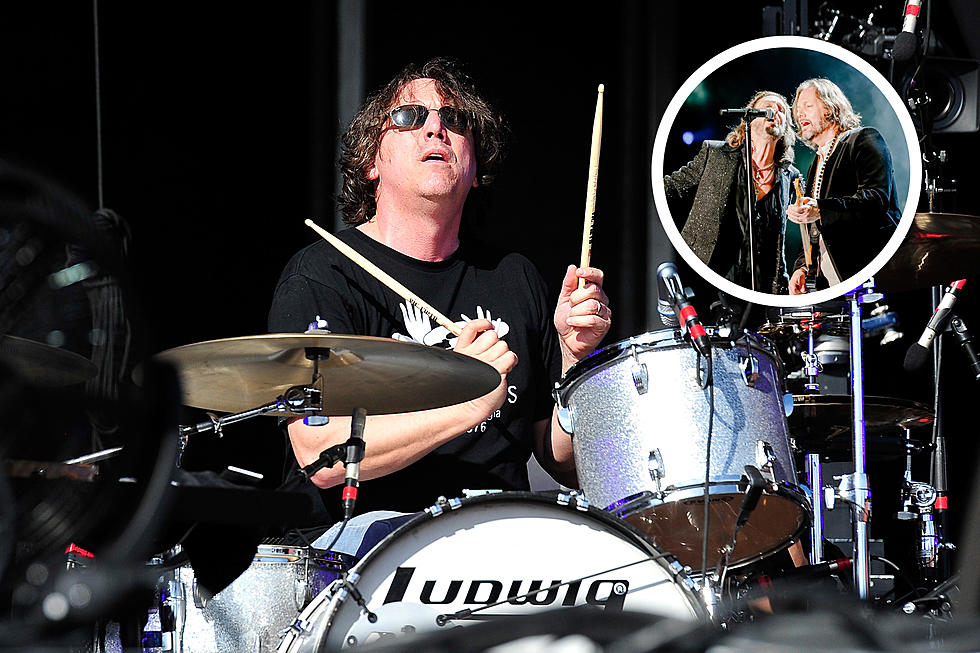
Why the Black Crowes Started Over on ‘Three Snakes and One Charm’
The Black Crowes became overnight sensations with 1990's Shake Your Money Maker. By the time they released 1992's The Southern Harmony and Musical Companion, critics had jumped on their bandwagon – and they stuck around when mainstream audiences started losing interest in 1994's Amorica.
But neither fans nor pundits could entirely agree on 1996's eclectic and polarizing Three Snakes and One Charm, which the Black Crowes recorded during a period of intense internal acrimony, particularly between brothers Chris and Rich Robinson.
"There was a lot of emotional baggage" in the aftermath of the Amorica tour, and everyone got on each other's nerves," Rich told Guitar World Acoustic magazine in September 1996. "We almost broke up a few times, but finally we all let go and moved on." Chris, for his part, had told Guitar World a few months earlier that eventually "you just realize, 'Oh, shit, I'm lucky and I'm happy 'cause I'm making a living being a musician, which is the thing I love more than anything.'"
A little distance also seemed to do the trick, as Chris was living in Los Angeles and Rich in Atlanta when they started swapping song ideas long distance. They slowly knocked their demos into shape before calling their band mates and producer Jack Joseph Puig to record basic tracks in an Atlanta home they soon baptized as Chateau de la Crowe. Prolific as usual, the band wound up capturing over two dozen songs, out of which they picked 12 that showcased both familiar Black Crowes hallmarks and novel experiments, all of them later finished at Los Angeles' Ocean Way Studios.
Among Three Snakes' many highlights, "Under a Mountain" was a cryptic Southern rocker (sample lyrics: "Lay down with number 13") that was written in five minutes, according to Rich; "Nebakanezer" was a psychedelic strut laced with serpentine guitars and "(Only) Halfway to Everywhere" an irrepressible singalong; the Indian-flavored "How Much for Your Wings" made for a beguiling detour and "Blackberry" was a funky rhythm & blues penned in the spirit of the band's earlier, breakthrough hit with Otis Redding's "Hard to Handle."
And while some songs, including "Good Friday," "One Mirror Too Many" and "Better When You're Not Alone," generally slacked off or dragged on like they had no place to go, the similarly slow but in every way sublime country soul of "Girl from a Pawnshop" became a peak moment in the Black Crowes' career, as it gradually built up with delicate tension, finally released via Marc Ford's stinging, cathartic lead breaks.
Sales were sluggish compared to prior efforts, stalling well short of Amorica gold and the previous LPs multi-platinum figures. The No. 15 chart peak slightly disappointing, but it's hard to find more flaws than triumphs among these songs. Instead, the Black Crowes remained fairly untouchable when it came to reviving classic-rock sounds and re-imagining them in original new ways, making them sound as fresh and timeless as you please.
Three years later, with 1999's next studio album, By Your Side, Chris, Rich, Marc, drummer Steve Gorman, keyboardist Eddie Harsch, and new bass player Sven Pipien (who replaced the popular Johnny Colt) were generally praised for reviving the safer, Rolling Stones- and Faces-inspired style of their debut. With the benefit of hindsight, the risk-taking freedom of Three Snakes and One Charm appears to have been vindicated in the broad scope of the Black Crowes' career – polarized opinions, occasional imperfections, and all.
Top 25 Southern Rock Albums
More From 102.9 WBLM










